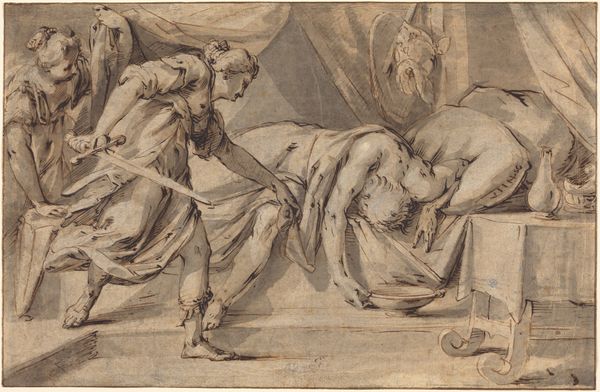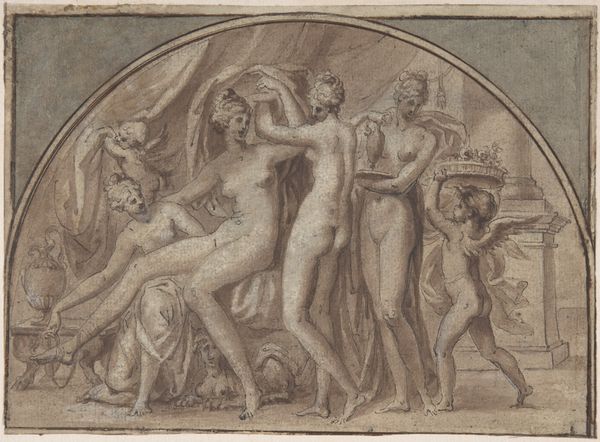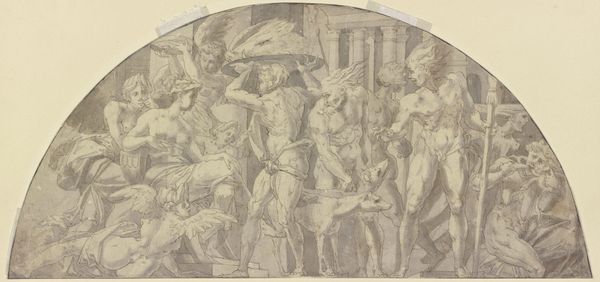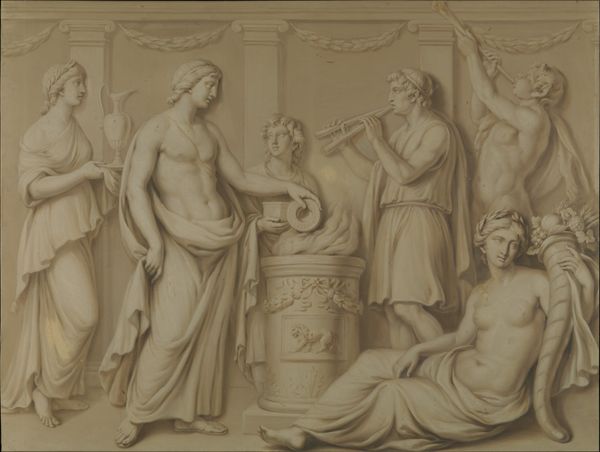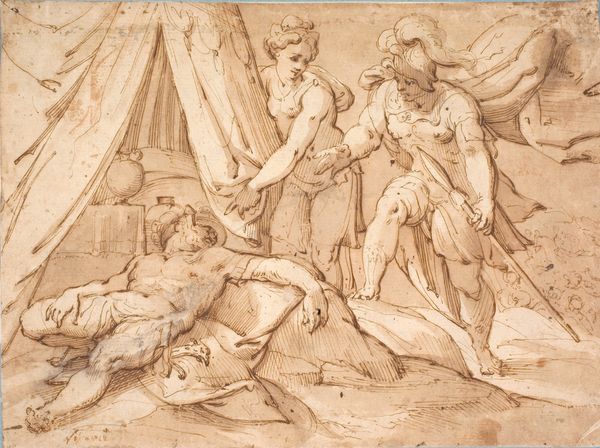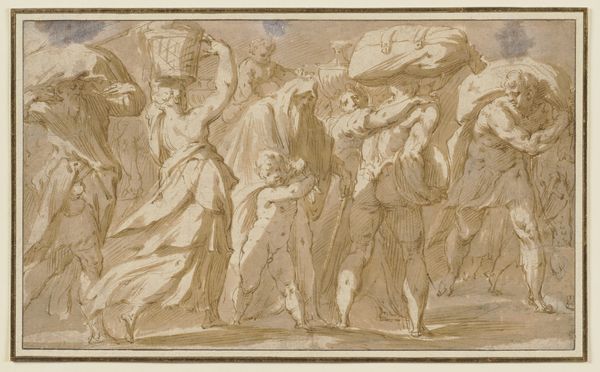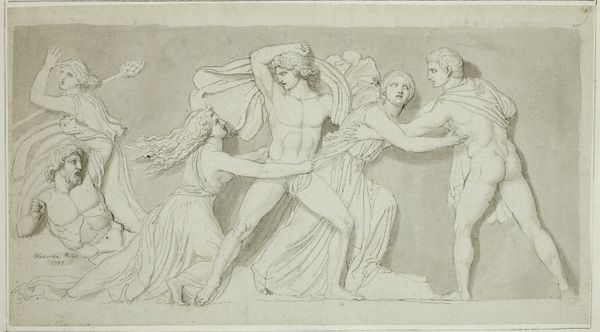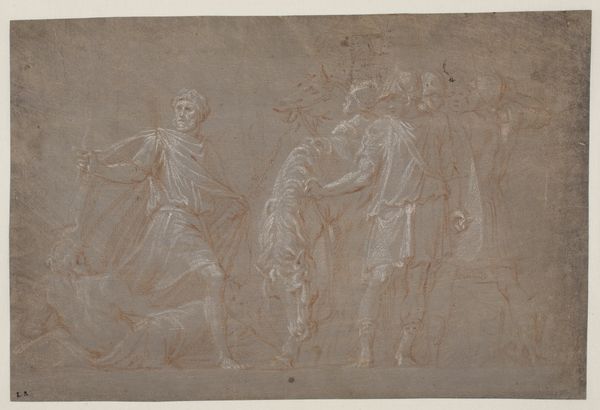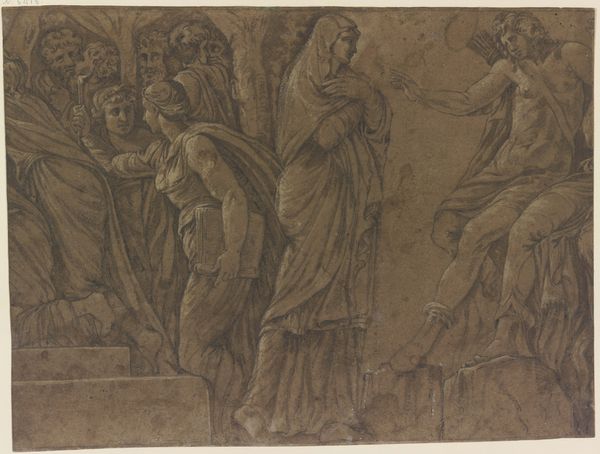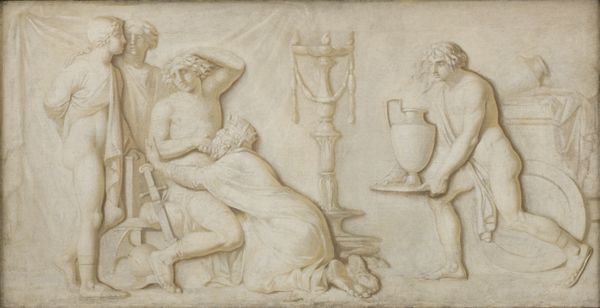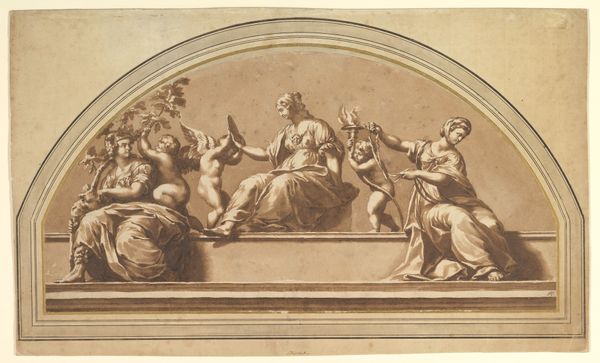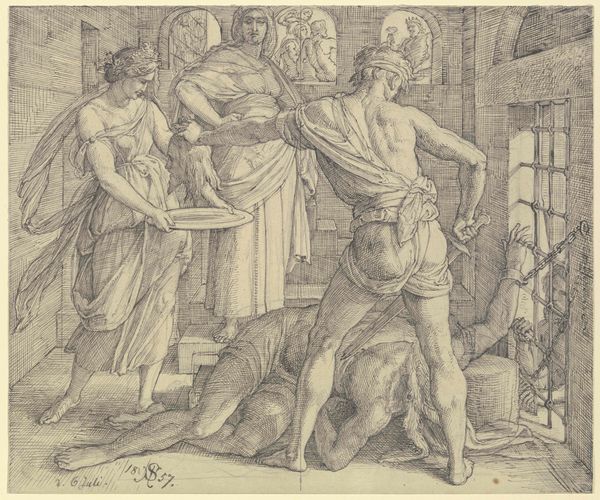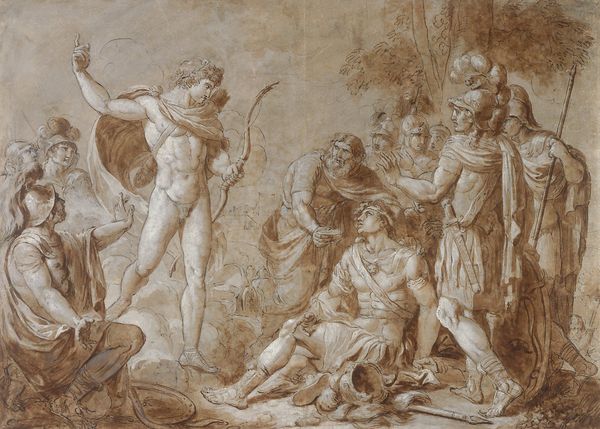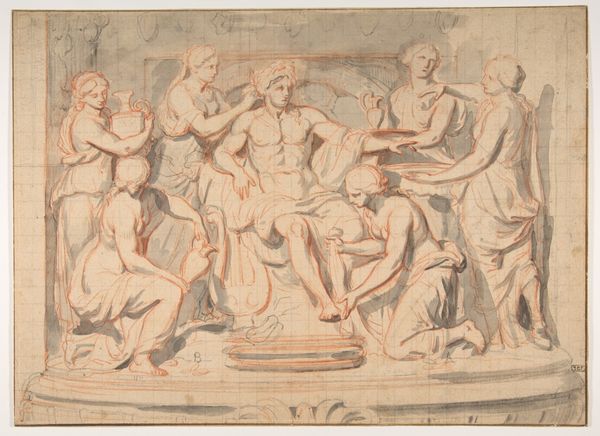
sculpture, plaster
#
neoclacissism
#
narrative-art
#
classical-realism
#
charcoal drawing
#
figuration
#
charcoal art
#
oil painting
#
sculpture
#
plaster
#
portrait drawing
#
history-painting
#
charcoal
Dimensions: 60 cm (height) x 120 cm (width) (Netto), 65.6 cm (height) x 130.3 cm (width) (Brutto)
Editor: This is Nicolai Abildgaard’s “The Death of Achilles,” created between 1794 and 1798. It’s currently located at the SMK, the National Gallery of Denmark. It feels like it is a sculptural relief, even though it seems to be executed as charcoal drawing. What’s striking is the linear precision, almost a rejection of color itself. How do you interpret the almost monochromatic palette in relation to the dramatic subject matter? Curator: Indeed. The near absence of chromatic variation emphasizes form and line to underscore the work's neoclassical roots. Observe how Abildgaard uses subtle shifts in tone to define volume and texture, creating a relief-like quality, as you pointed out. This echoes the sculptural friezes of antiquity, drawing parallels between Achilles' fate and classical ideals of heroism and tragedy. Do you notice how the composition guides your eye through the narrative? Editor: Yes, I see that. The archer to the left draws your eye towards the central group surrounding Achilles, and then the gaze lingers on the altar to the right. But what does this stylistic choice -- rejecting colour -- communicate? Does it evoke a sense of timelessness or perhaps stoicism in the face of death? Curator: Precisely. The restricted palette focuses our attention on the underlying structure and formal relationships within the work. It is a deliberate reduction, stripping away the emotive power of colour to reveal the intellectual architecture of the piece. One might also see it as invoking the appearance of newly excavated classical artifacts where pigments have been lost to time, no? It compels us to consider the universal and enduring aspects of the narrative beyond any specific historical context. Editor: I see your point. It almost feels like we are analyzing the essence of tragedy itself. Curator: Indeed. Through a rigorous focus on form and composition, the work transcends a mere depiction of death, becoming an exploration of the aesthetic principles that underpin classical art and thought. Editor: That’s given me a new appreciation for Abildgaard’s choices and how they shape our understanding. Thanks!
Comments
No comments
Be the first to comment and join the conversation on the ultimate creative platform.
